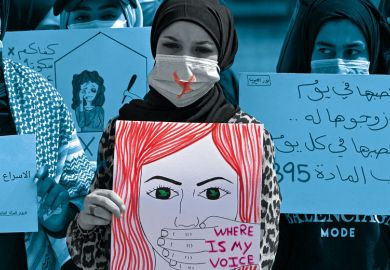Matt Cook revels in an account of diverse sex in the early 20th-century city
Queer London , which has just become the Longman- History Today Book of the Year, is a ground-breaking work. While middle-class lives and writing have tended to compel the attention of most historians of homosexuality, Matt Houlbrook has looked more widely and found a rich seam of new evidence. It has allowed him to construct a complex, compelling account of interwar sexualities and to map a new, intimate geography of London.
In a letter to a friend in 1934, "Cyril" wrote: "I have only been queer since I came to London about two years ago." As the book unfolds from his story, we realise that the city is not only the setting for a multifaceted queer culture, but also productive of it; being queer is decisively equated to the "cultural experience of urban life".
Houlbrook vividly illustrates the significance of actual places and things in London, and so indicates the importance of material culture to the way men were experiencing themselves and each other. He takes chiffon, suede, lipstick, powder and puffs, urinals, parks, pavements, shops, bars and lodging houses as seriously as sexological tomes and earnest fiction. All of these were, after all, the stuff of everyday life.
We find three distinct queer characters in the city - "the effeminate quean (sic), the 'normal' working-class man who had sex with men and women, and the respectable middle-class 'homosexual'". Houlbrook shows that while the queans were pitched against "normal" men in terms of identity, both might be found having sex in the city's infamous cottages. Normative working-class masculinity did not preclude relatively open sexual relationships with other men at this time. Homosexual and heterosexual men, meanwhile, were more clearly defined by their desires for, respectively, men or women.
These various men could be found in some infamous venues - the Fitzroy Tavern just north of Oxford Street, the Savoy Turkish baths in Jermyn Street and the "Biogrope" cinema in postwar Victoria. Houlbrook also importantly tracks the genesis of queer neighbourhoods, most notably Pimlico and Bayswater, and later Notting Hill and Earls Court. In the East End, meanwhile, he finds tolerant communities where "John" remembers "mums and dads (who) used to refer to the boys by their camp name, 'Hello, Lola, love, how are you dear? You going to give us a song?'"
The city was no panacea, though, and men had to negotiate levels of risk carefully. Houlbrook is at his most analytically sensitive when he explores "poof rorting" (bashing), sexual abuse, extortion and blackmail in terms of class, concepts of masculinity and age difference. He also illustrates strategies men deployed to protect themselves, including some wonderful camp backchat. In terms of policing and government responses to the homosexual "problem" of the 1950s, Houlbrook puts further meat on the bones of Patrick Higgins's argument in his book Heterosexual Dictatorship that they were far too chaotic and ad hoc to constitute a witch-hunt.
These official responses nevertheless heralded shifts in the capital's queer life as the street cultures of the 1920s and 1930s faded from view in favour of more discreet commercial venues. The imperative to such discretion was underscored by the Wolfenden committee report of 1957 and the legislation that followed ten years later. Both suggested the domestic terms on which homosexuality might be acceptable, belying the queerness of both London and the homosexual cultures that had unfolded there.
All this vivid detail is delivered with analytic acumen and theoretical sophistication. We rarely lose sight of the point of stories and anecdotes as they build to illustrate arguments about the city and the plural and shifting understandings of queer sex and affections. Houlbrook reminds us that there was no singular queer type or unified queer scene, and neither is there a seamless queer history telling the story of progressive liberation. Interwar subcultures might look as alien to me as Soho in 2006 might to Cyril or John. There are of course continuities between then and now, but it is the differences that Houlbrook has illuminated so strikingly.
Perhaps as a result, there is a nostalgia here for a world lost. This brings a rare warmth to the book: Houlbrook has a genuine affection for the men and places he describes. Occasionally his spectacles feel just a little too rose (or lilac) tinted. He is right to suggest that some of our understandings of queer life have narrowed since the war, but I find it difficult to regret the passing of certain other interwar constraints. A small qualm, though, about a great book and a worthy winner.
Matt Cook is lecturer in history, Birkbeck, University of London.
Queer London: Perils and Pleasures in the Sexual Metropolis, 1918-1957
Author - Matt Houlbrook
Publisher - University of Chicago Press
Pages - 384
Price - £18.50
ISBN - 0 226 35460 1
Register to continue
Why register?
- Registration is free and only takes a moment
- Once registered, you can read 3 articles a month
- Sign up for our newsletter
Subscribe
Or subscribe for unlimited access to:
- Unlimited access to news, views, insights & reviews
- Digital editions
- Digital access to THE’s university and college rankings analysis
Already registered or a current subscriber? Login



